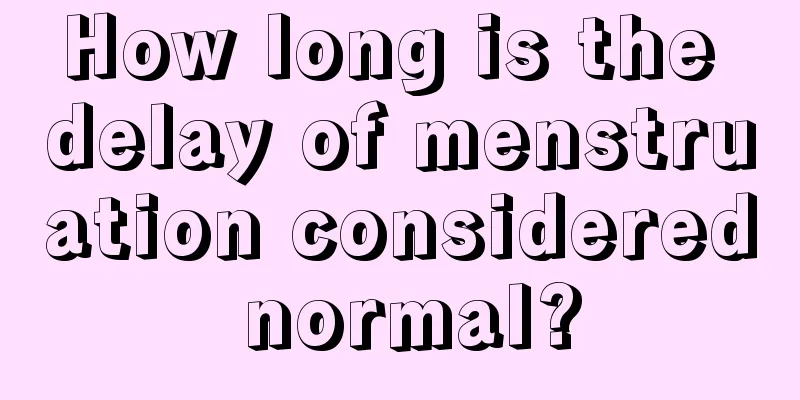Is it okay to wear a waist corset after childbirth? Precautions for postpartum waist girdle

|
During pregnancy, a woman's body shape will change significantly. After giving birth, the shape change will further increase, especially the fat in the abdomen. Moreover, this fat has no elasticity, which makes the body shape collapse instantly. So is it good for women to wear a waist corset after giving birth? Under normal circumstances, a woman's uterus will maintain its normal position with the combined action of various ligaments and pelvic floor support tissues. During pregnancy, as the fetus continues to grow and develop, the uterus continues to increase in size to about 20 times its pre-pregnancy size, so the ligaments that secure the uterus will also soften and lengthen accordingly. After delivery, it takes about 10 days for the uterus to descend into the pelvis, but it takes 6 weeks to return to its normal size. The ligaments that fix the uterus are overstretched during pregnancy and are slightly looser than before pregnancy. The vagina and pelvic floor supporting tissues lose elasticity due to overstretching, expansion and damage during childbirth and cannot fully recover to their pre-delivery state. Affected by the expansion of the pregnant uterus, the abdominal wall relaxes after delivery and takes about 6-8 weeks to recover. Therefore, wearing a waist corset after childbirth not only does not help restore the tension of the abdominal wall, but due to the increased abdominal pressure, the support capacity of the posterior pelvic floor support tissue and ligaments on the reproductive organs decreases, leading to uterine prolapse, severe retroversion and retroflexion of the uterus, and bulging of the anterior and posterior walls of the vagina. Due to the change in the normal position of the reproductive organs, the blood flow in the pelvis is poor, and the resistance is reduced, which can easily cause various gynecological diseases such as pelvic inflammatory disease, adnexitis, pelvic congestion syndrome, etc., seriously affecting the health of the mother. Due to pregnancy, pregnant women have active metabolic functions. In addition to supplying the needs of itself and the fetus, it is also necessary to accumulate about 5 kg of fat distributed in the chest, abdomen, and buttocks to provide energy for the late pregnancy, delivery and lactation, and more for breastfeeding. This fat will not disappear quickly due to waist binding during the postpartum period. To restore your body shape, one should exercise after childbirth, do more leg exercises, sit-ups, etc., which can enhance the tone of the abdominal muscles, and the most important thing is breastfeeding. It is not advisable to wear a waist binder after childbirth. It affects women's physical health and even affects the secretion of milk. Therefore, it is best for women after childbirth not to wear a waist binder. |
<<: Can women soak their feet during menstruation?
>>: How to restore breasts after weaning?
Recommend
Can the osmanthus seeds on the osmanthus tree be sown? How to plant osmanthus seeds so that they can survive
Osmanthus is very common in our lives. It is love...
Do I need to cover myself up when I sweat during the confinement period?
Because childbirth will cause great damage to the...
Let yourself go and deal with Hashimoto's thyroiditis easily
Working 996 hours a day and overtime has become t...
Can pregnant women have their teeth extracted?
Pregnancy is prone to tooth bleeding and swollen ...
Summer is hot! Doctor runner unlocks the secrets of scientific fluid replenishment before and after exercise
Written by Fu Jingbo (Chief Surgeon of Peking Uni...
How long does it take for nipples to turn dark during pregnancy?
In the early stages of pregnancy, many women will...
Diet therapy for acne between the breasts
I always get acne between my breasts, and my skin...
Small bumps on the vagina
The female vagina is a very important organ for w...
Can anyone eat cherries? What should you pay attention to when eating cherries?
Cherry is a common fruit in our life. It is loved...
What to do if you have hives after childbirth
Mothers are weak after giving birth, and their im...
Why are my nipples hard and a little painful?
In addition to showing a sexy side, people probab...
Cancer is not scary. If you do these three things, you can "live with cancer". Please save this article.
With the advancement of modern medical technology...
Can women get cystitis?
Cystitis is a common urinary system disease in cl...
What causes female hand tremors?
The body will respond in various ways to various ...









